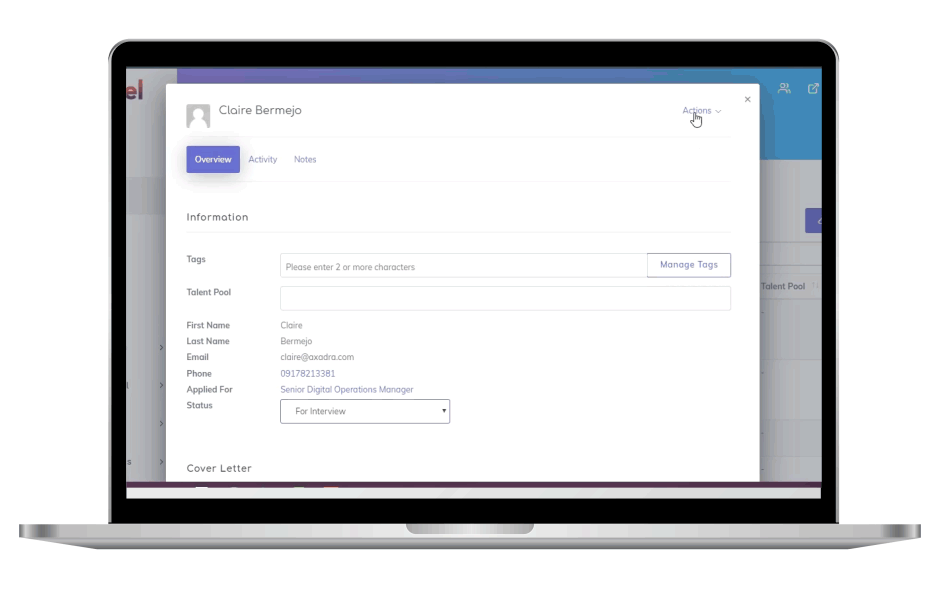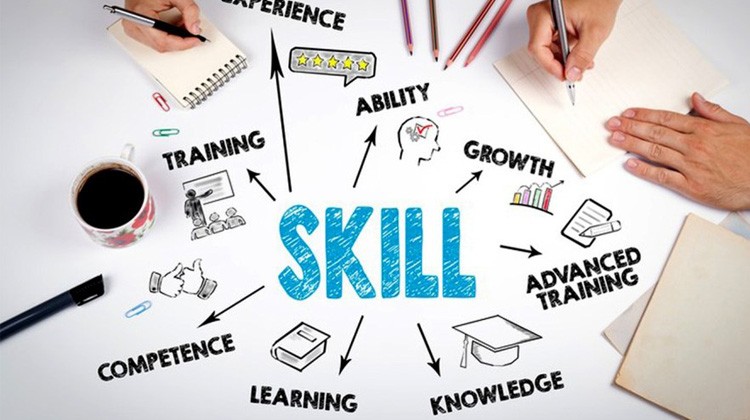The saying “learning never stops” is not just true in the classroom; it can also be applied in the workplace. With technology and industries constantly shifting, companies must prioritize employee upskilling to remain competitive and ensure their workforce can keep up with these changes. The benefits of upskilling go beyond personal and professional growth. It can also enhance employee engagement, satisfaction, and performance—factors critical to your business’s success.
Read on to learn more about the importance of upskilling and ways you can implement it in the workplace.
What is Upskilling
Upskilling is the process of enhancing employees’ existing skills and acquiring new ones to meet the demands of their current roles or potentially push them forward in their career path. The skills one develops can be specific to their role or field, or broader and transferable to other jobs or industries.
Benefits of Upskilling for Employees
Employees and job seekers need to be proactive and adaptable to stay relevant. For instance, the recent rise of automation and artificial intelligence is putting many traditional jobs at risk and shifting employer priorities. Professionals should embrace a growth mindset and not remain stagnant while industries evolve around them.
Upskilling ensures you are equipped with critical in-demand skills others may not have. This way, you don’t drown in the saturated talent pool and always have something unique to bring to the table!
Here are other benefits of upskilling for employees:
More Job Prospects
Employees who invest in upskilling often find themselves with better job prospects and opportunities for advancement. Learning new skills can open doors to promotions and new roles within the organization.
Increased Job Satisfaction
Engaging in continuous learning can lead to greater job satisfaction. Employees feel valued when organizations invest in their professional development, fostering loyalty and commitment.
Greater Adaptability
Upskilled employees are fully prepared to adapt to changes in their roles and industries. This adaptability is crucial in fields where job requirements can change overnight.
Benefits of Upskilling for Employers
Upskilling can help organizations strengthen their existing workforce. After all, people are a business’s greatest resource. It’s only right to invest in the people you hire and continuously provide them with novelty and a sense of purpose. Employees are more likely to stay if their employer values growth and career progression.
Additionally, job roles and their requirements change rapidly. Companies are forced to find new talent or fill skill gaps through upskilling. This shows that upskilling is essential not just for individual career development but also for organizational success.
Below are other reasons why upskilling is important for employers:
Improved Productivity
Upskilling employees enhances their efficiency and effectiveness. A well-trained workforce is naturally more productive.
Higher Employee Retention
Employees are less likely to leave for opportunities elsewhere if they feel their current employer is invested in their growth. This decreases the need to recruit new employees to fill vacated positions and skill gaps.
Competitive Advantage
Companies that value upskilling can stay abreast with technological advancements and industry shifts.
Reduced Bad Hires
A culture of learning and development can attract high-quality candidates eager to learn and advance in their careers.
How to Upskill Your Employees
Now that you know the importance of upskilling employees, it’s time to develop a strategy. A strategic and comprehensive upskilling plan needs to work for the company too, not just the employees. Here are steps you can follow to start building your upskilling program:
1. Assess Current Skills and Identify Gaps
In collaboration with your leadership team, assess your employees’ skill sets across the board. Use surveys, performance reviews, and skills assessments to identify gaps between current skills and those needed for future roles. You can also ask your employees to determine the areas they lack and what improvements they’d like to make.
On the other hand, some employees may have the desire to learn but not know where they fall short. This is common among more tenured professionals who have years of experience under their belt but have not ventured beyond their daily responsibilities in the workplace.
2. Implement a Structured Career Pathing
Career pathing is the process of mapping out an employee’s potential career trajectory within an organization. It highlights the roles they can aspire to and the skills needed for those positions. It also helps you, the employer, identify whether your employees need reskilling or upskilling. By providing a clear roadmap, career pathing identifies specific steps and goals that employees should take to successfully transition to new positions. In turn, employers can offer the necessary learning opportunities.
3. Align with Business Objectives
Ensure that your employee upskilling initiatives are aligned with the organization’s goals. Identify the skills that are critical for achieving business objectives and tailor your training programs accordingly.
For example, it can be easy to provide training for the newest tool or software. However, this tool might not benefit the business in the long term. An organization should focus on how it can improve its core competencies. Yes, you can still provide training to stay current with industry trends and new technologies, but it’s important to note how beneficial and useful this will be in the near future.
4. Choose Appropriate Learning Methods
After assessing your employees’ current competencies, skill gaps, and career aspirations, you can start selecting the appropriate training programs. Here are some things to consider during this step:
- Learning styles
- Training format (group sessions vs. one-on-one lessons)
- Internal vs. external training
- Upskilling type (mentoring, online courses, workshops, mentorship, etc.)
- Technology or platform
5. Create a Supportive Learning Environment
Encourage a culture of continuous learning by providing resources and support. Allow employees to allocate time during work hours for upskilling and create a safe space for them to practice new skills. The key is to help your employees see the importance of upskilling as it applies to them, not just for the benefit of the company. If possible, you can also offer financial incentives to motivate employees to participate.
6. Monitor Progress and Measure Success
Establish key performance indicators (KPIs) to evaluate the effectiveness of your upskilling programs. Regularly assess the progress of employees and gather feedback to make necessary adjustments to the training programs.
Types of Employee Upskilling
Various types of upskilling can be categorized based on their focus and delivery methods. Understanding these different approaches can help individuals and businesses tailor their learning strategies effectively.
Upskilling can be broadly divided into two main types: hard skills and soft skills.
- Hard Skills: Hard skills are technical abilities that are specific to a particular job or industry. They are often measurable and can be learned through formal training or on-the-job experience. Examples include proficiency in software, tools, or equipment, as well as expertise in industry trends, regulations, or best practices.
- Soft Skills: Soft skills are interpersonal and communication abilities that complement technical expertise. They are essential for building relationships, collaborating effectively, and navigating workplace dynamics. Examples include skills in leadership and management, problem-solving and critical thinking, and emotional intelligence.
Employers can try the following methods of upskilling:
Online Courses
Online courses offer flexibility and accessibility. Employees can learn at their own pace and convenience. These courses can be offered in-house or by a third party, often covering a wide range of topics. Online courses are usually preferred since they enable employees to balance their professional responsibilities while enhancing their skill sets.
Mentoring and Shadowing
Mentoring is pairing less experienced or tenured employees with seasoned professionals who can provide guidance and knowledge. Shadowing allows employees to observe colleagues in action so they can gain insights into best practices—literally see how the work is done.
Lunch-and-Learn Sessions
These sessions are beneficial for employees who feel they don’t have enough time to commit to formal training. Lunch-and-learn offers informal training opportunities where employees can learn about specific topics during their lunch breaks.
Microlearning
Microlearning involves delivering content in small, focused segments that employees can easily digest. For example, employees may be required to watch short videos and answer fast quizzes to test their grasp of the topic. Microlearning is ideal for busy professionals, as it allows for quick learning sessions that fit into their schedules.
Formal Education
Formal education involves structured programs by educational institutions, such as degree programs. While this method often requires a significant time and financial commitment, it provides in-depth knowledge and recognized qualifications. Organizations can support employees pursuing formal education by offering tuition reimbursement or flexible work arrangements.
Certifications
Certifications validate an employee’s skills and knowledge in a specific area. These are usually granted by regulatory bodies, educational institutions, or official associations. These programs can enhance an employee’s credibility and career prospects. Certifications can also be pursued through online courses and workshops.
Common Pitfalls of Upskilling That Employers Should Avoid
As we already know, the importance of upskilling employees cannot be overstated. However, it’s also important to recognize that it has its fair share of risks. But with proper planning, these can be avoided. Here are common pitfalls to watch out for when building your upskilling strategy:
Lack of Alignment with Business Objectives
Upskilling programs that do not align with the organization’s goals may lead to irrelevant training.
Generic Training
Individual employee needs are unique. Implementing training programs just for the sake of upskilling fails to address specific skills and career goals.
Upskilling as a One-Time Event
Remember, upskilling is a process. It works best when employees are trained continuously, not just once or occasionally. New skills require time and practice to build.
Limited Application
Employees may struggle to apply new skills without real-world practice. Create opportunities for them to use their skills in projects or simulations.
Cultivate a Culture of Learning in the Workplace
There’s no one-size-fits-all approach when it comes to upskilling. Individuals have distinct skills, needs, and career goals. As such, determining which type of training programs work best for your employees and your organization will likely require some trial and error.
However, the rewards are worth it. When you offer employees opportunities to upskill, you make them feel valued. And when people feel valued, their morale and job performance go up. Ultimately, this will positively impact your bottom line!
That said, having a skilled workforce may lead to organizational success. But it all begins with effective talent acquisition! Skill-based hiring lays the groundwork for that.
Skill-Based Hiring with an ATS
Gauging the skills of incoming employees through an Applicant Tracking System (ATS) is essential for proactive upskilling. An ATS can analyze resumes, rank candidates based on specific skills, and integrate assessments to identify skill gaps. Skillfuel’s ATS streamlines this process, offering features that automate candidate evaluation and enhance recruitment efficiency.
Build a skilled workforce ready to adapt and thrive. Sign up for our ATS today!















